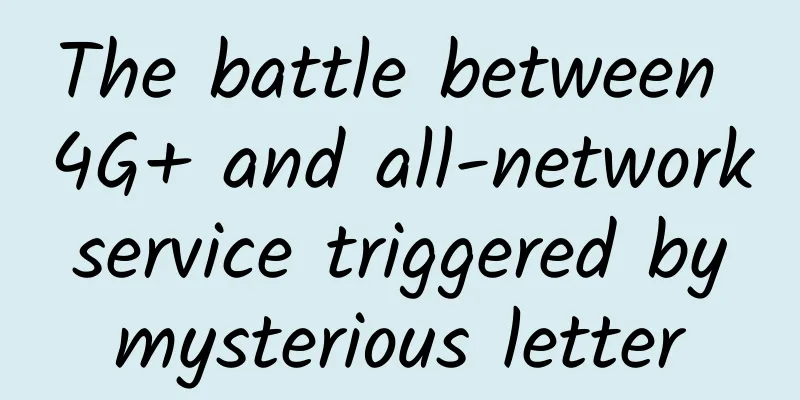Why SD-WAN Won’t Kill MPLS

|
"SD-WAN will replace MPLS" is a common refrain used by SD-WAN vendors trying to drum up new business from managed broadband service providers competing with traditional enterprise-focused service providers. The idea is simple: Enterprises can use the Internet as a backbone for low-cost business broadband, use SD-WAN products to manage multiple links, and get rid of expensive dedicated WAN services.
Sounds good, right? It exploits enterprise IT professionals' dissatisfaction with their current WAN providers and their desire for an alternative. The truth is, it's like eating a big bar of chocolate: It feels great now, but an hour later, you'll want more. Here are four reasons why it's a misleading message. First: The real reason for dissatisfaction Whenever someone expresses dissatisfaction with their WAN, it’s not because they are dissatisfied with the technology. The real reason for dissatisfaction is that enterprise IT is tired of paying for services that are not delivering the expected value. The real reason for dissatisfaction:
Every outage and slow service delivery affects the business's goals. Businesses have to interconnect over the WAN, so they have to pay for services that do not meet their expectations. Service providers are listening and building self-service, which can handle such complaints more effectively. Second: Every dissatisfied customer has something to be satisfied with In a recent GlobalData study, we asked network IT professionals about their satisfaction with their WAN providers and surprisingly, not a single one of them was dissatisfied. At worst, the respondents were neutral. 36% of respondents said they were very satisfied, their WAN was relatively static, and reported having a good working relationship with their customer representatives. Some noted some of the issues mentioned above, but none were serious enough to make them abandon their current vendor. Most respondents would like to reduce WAN costs, but the service they receive is good, and cost reduction alone is not the main reason to drive them to change. The dissatisfaction with MPLS is overstated, and companies still have good reasons to rely on it for both business-critical and non-business-critical communications. The impetus for SD-WAN is not to replace their current WAN, but to augment their current WAN. Third: Switch from one question to another If you expect that switching from one service provider to another will magically give you better service, this may not be the case. Sometimes the poor service a business receives, such as slow service, outages, slow service changes, etc., is systemic to the service provider, and many businesses are changing their internal processes to become more efficient. Other types of poor service are regional and can span multiple states, a single state, county, or town. Sometimes, it’s a combination of factors, such as legacy hardware issues, physical equipment exposed to the elements, poorly trained service representatives, and more. These are hard to spot during an assessment, and any service provider can be plagued by them. Switching providers are never-ending, and while SD-WAN makes switching easier by abstracting the interconnect from the WAN, enterprises still need WAN providers to provide the infrastructure. Fourth: Dedicated WAN connection is a requirement Many companies need private WAN connectivity like MPLS for a variety of reasons. Perhaps they want to ensure an end-to-end SLA for WAN service guarantees. Perhaps these companies have regulatory requirements that they can best meet using a private WAN. Perhaps the business does not want to use the Internet as a backbone and prefers a dedicated service. Perhaps the company wants to use a private WAN for business-critical communications and move all other communications to commercial broadband services. Regardless, it is clear that many companies use private WANs, and this is not changing any time soon. Our forecast for 2021 is for both MPLS and business broadband to grow year-over-year, so demand for MPLS will continue to grow in the near future. Finding the value of SD-WAN Enterprise IT won’t settle for inferior service just to pay less. If you tell a network professional that they can cut their monthly WAN spend by two-thirds, but their network and application performance will drop in half, they probably won’t even consider it. It’s not worth sacrificing productivity to save money. Tell that same network professional that you can dramatically improve the reliability of branch-to-branch connectivity without the need for traditional WAN circuits while streamlining operations, and they’ll pay attention because it’s now about value. With a reliable, high-capacity WAN in place, the business can move forward with its plans to increase revenue with a faster, more stable WAN. |
<<: Talk about what you want to know and don't know about SDN
>>: NETSCOUT's OneTouch AT G2 is your network testing nightmare
Recommend
edgeNAT Los Angeles 4837 dual ISP host simple test
In February, the tribe shared the news that edgeN...
What are the applications of machine learning in network management?
As networks move toward automation and intelligen...
PnetLab storage is insufficient? Teach you how to expand it step by step
When using PnetLab to build a network experiment ...
Animation explains TCP. If you still don’t understand, please hit me up
Preface The TCP three-way handshake process is a ...
Encryption makes enterprise data no longer "naked"
At present, the network security environment is d...
In addition to the legend of getting rich quickly, what else is possible with blockchain?
The prevalence of various speculations has made b...
Why ICO made a mistake and blockchain will still lead the era
Since the release of the one-size-fits-all policy...
The convergence of edge data centers and 5G revolutionizes data transmission and the Internet of Things
With the rapid development of the digital age, th...
How to understand the multi-layer model of bus communication protocol
[[257539]] Judging from the development trend of ...
The UK officially bans Huawei 5G equipment! Officials respond quickly
The UK has just officially announced that Huawei ...
IKIHOST: $4/month-4GB/40G NVMe/1Gbps unlimited traffic/Los Angeles data center
The tribe shared information about IKIHOST last y...
Why Cisco is making intent-based networking an open platform
The way businesses run their networks has remaine...
Byte One: The server is down, is the client's TCP connection still there?
Hello everyone, I am Xiaolin. I received a privat...
Sharktech: Los Angeles E3 high-security 1Gbps unlimited traffic server starting at $59/month
Sharktech is a computer room that focuses on high...
The scale is close to 40 trillion yuan, opportunities and challenges for the development of my country's digital economy
[[424098]] In recent years, with the advent of a ...









